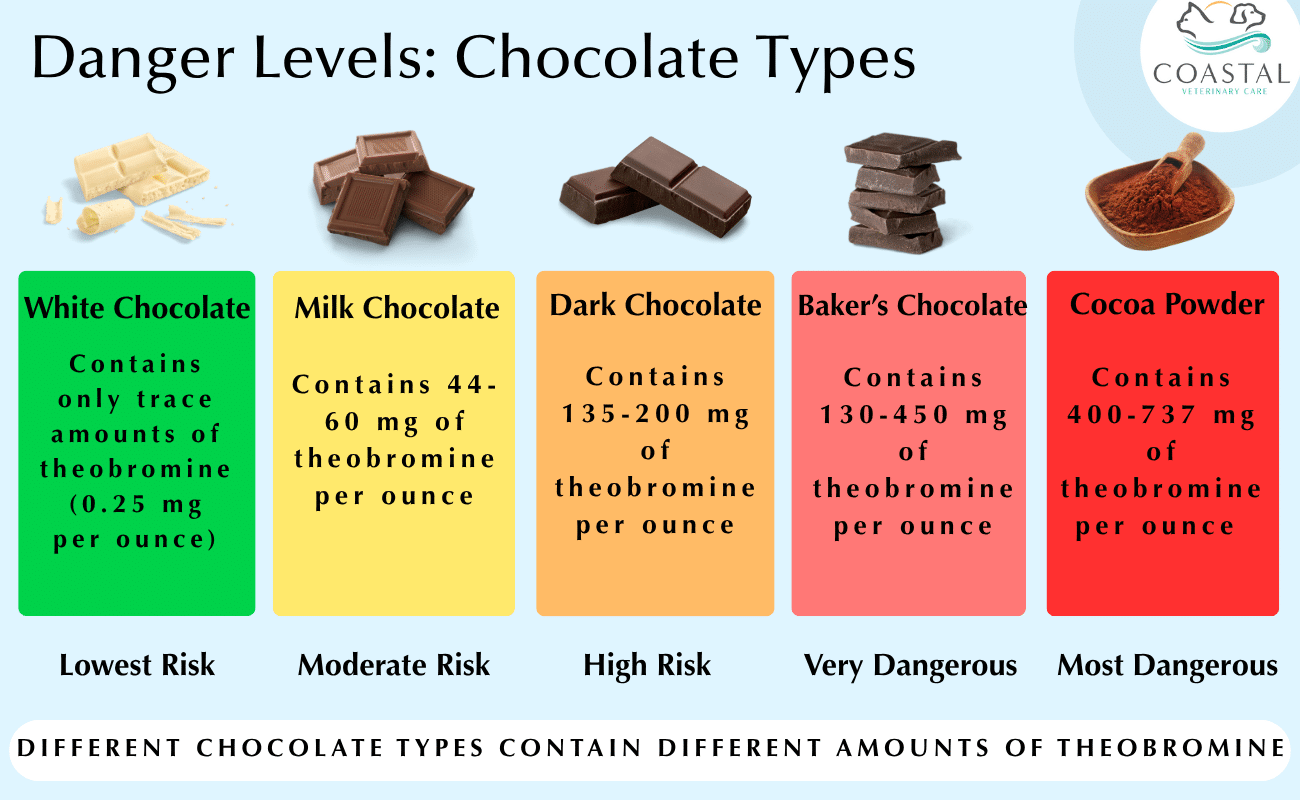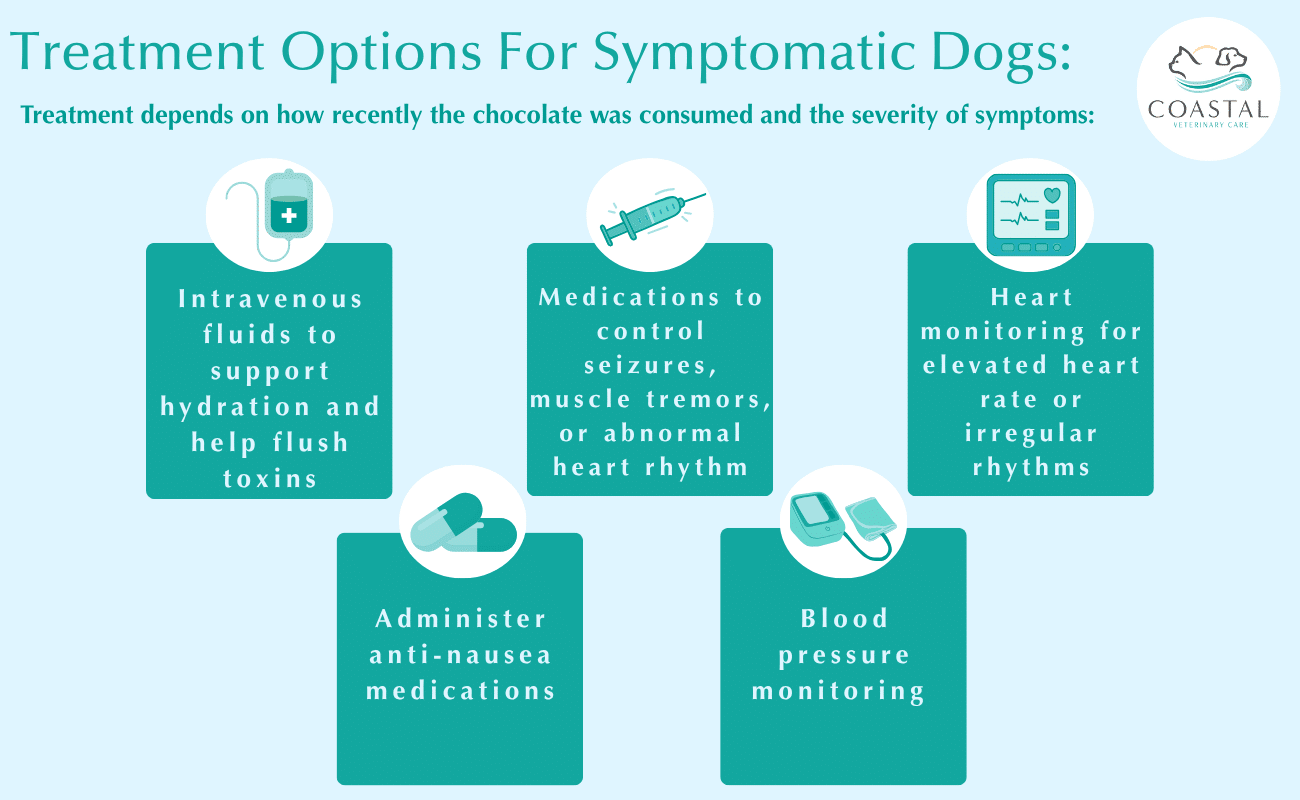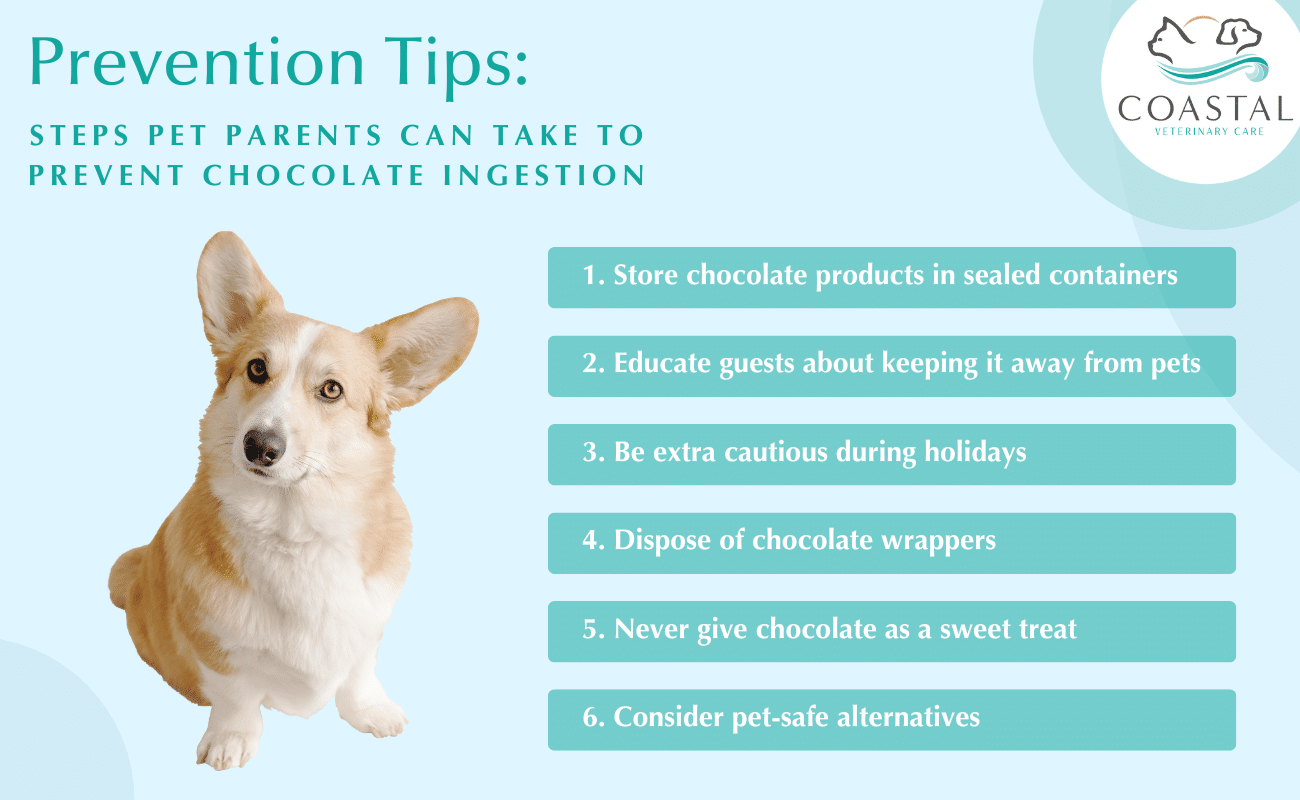My Dog Ate Chocolate: What to Do and When to Panic
The Short Answer: If your dog ate chocolate, contact your veterinarian or the Pet Poison Helpline immediately with details about the type of chocolate and amount of chocolate consumed. Dark chocolate and baker’s chocolate pose the greatest risk due to high theobromine content, while white chocolate contains minimal toxins.
Finding out your dog ate chocolate can send any pet owner into immediate worry mode. Chocolate is one of the most common causes of chocolate poisoning in dogs, and understanding how to respond quickly can make all the difference. The severity of chocolate toxicity depends on several factors: your dog’s size, the type of chocolate they consumed, and how much they ate. This guide will walk you through everything you need to know about chocolate ingestion in dogs, from recognizing symptoms to knowing when immediate veterinary care is necessary.
Why Is Chocolate Toxic to Dogs?
Chocolate contains two substances that are toxic to dogs: theobromine and caffeine. While humans metabolize these compounds easily, dogs process them much more slowly, allowing toxins to build up in their system and affect the nervous system and heart.
Theobromine is the primary concern in chocolate toxicity. This compound stimulates the central nervous system, increases heart rate, and acts as a muscle relaxant. Different types of chocolate contain varying levels of theobromine and cocoa solids, which is why some chocolates are far more dangerous than others.
Chocolate Types Ranked by Danger Level

Different types of chocolate contain vastly different amounts of theobromine:
- Cocoa powder: Highest Concentration – contains 400-737 mg of theobromine per ounce
- Baker’s chocolate (unsweetened): Very dangerous – contains 130-450 mg per ounce
- Dark chocolate / bitter chocolate: High risk – contains 135-200 mg per ounce
- Milk chocolate: Moderate risk – contains 44-60 mg per ounce
- White chocolate: Lowest risk – contains only trace amounts (0.25 mg per ounce)
White chocolate technically poses minimal theobromine risk because it contains very little cocoa solids. However, the high fat and sugar content can still cause stomach upset or pancreatitis in dogs.
Immediate Steps When Your Dog Eats Chocolate
What to Do Right Away
- Don’t panic, but act quickly – Time matters in chocolate poisoning cases
- Identify the chocolate – Determine what chocolate product your dog consumed
- Estimate the amount – Figure out how much chocolate was eaten
- Note the time – Record when the chocolate ingestion occurred
- Call your veterinarian or emergency vet immediately
Information to Gather
Your veterinarian will need specific details to assess the risk:
- Your dog’s weight
- Type of chocolate consumed (check packaging for cocoa percentage)
- Amount of chocolate eaten (in ounces or grams)
- Time elapsed since ingestion
- Any symptoms your dog is showing
Many veterinary clinics and the Animal Poison Control center offer a chocolate toxicity calculator to determine risk levels. However, always call your veterinary hospital rather than relying solely on online calculators.
Symptoms of Chocolate Poisoning
Clinical signs of chocolate toxicity typically appear within 6-12 hours after chocolate ingestion, though symptoms can develop as early as 1-2 hours in severe cases.
Mild Symptoms
Mild chocolate toxicity may cause:
- Vomiting
- Diarrhea
- Increased thirst
- Restlessness
- Excessive urination
Moderate to Severe Symptoms
Severe symptoms that require immediate emergency veterinarian attention include:
- Rapid or abnormal heart rate
- Abnormal heart rhythm
- Elevated blood pressure
- Muscle tremors or twitching
- Hyperactivity or extreme restlessness
- Panting or difficulty breathing
- Seizures
- Collapse
In extreme cases, untreated chocolate poisoning can lead to heart failure, coma, or death. Early intervention significantly improves outcomes for dogs experiencing chocolate toxicity.
Treatment Options
At the Veterinary Clinic
When you bring your dog to a veterinary clinic, treatment depends on how recently the chocolate was consumed and the severity of symptoms:
If ingestion was recent (within 2 hours):
- Your veterinarian may induce vomiting to remove undigested chocolate
- Activated charcoal may be administered to prevent further absorption of theobromine
For symptomatic dogs:
- Intravenous fluids to support hydration and help flush toxins
- Medications to control seizures, muscle tremors, or abnormal heart rhythm
- Heart monitoring for elevated heart rate or irregular rhythms
- Anti-nausea medications
- Blood pressure monitoring in severe cases

Hospital Stay
Dogs with severe symptoms or those who consumed high doses of theobromine may require hospitalization for 24-48 hours. During this time, the veterinary hospital staff will provide supportive care and monitor vital signs closely.
Mild symptoms in dogs who consumed small amounts may be managed with outpatient care, but your veterinarian will provide specific monitoring instructions.
Risk Factors: When to Worry Most
Size Matters
A dog’s size plays a major role in chocolate toxicity risk. A chocolate chip cookie that causes mild chocolate toxicity in a Chihuahua might produce no symptoms in a Great Dane.
- Mild symptoms: 20 mg of theobromine per pound of body weight
- Severe symptoms: 40-50 mg per pound
- Potentially fatal: 100-200 mg per pound
High-Risk Scenarios
Contact an emergency vet immediately if:
- Your dog consumed baker’s chocolate, cocoa powder, or dark chocolate
- A small dog ate any amount of chocolate
- Your dog is showing any symptoms
- You’re unsure about the type of chocolate or amount consumed
- Your dog has pre-existing heart conditions
Prevention Tips for Pet Parents

Pet parents can take several steps to prevent chocolate ingestion:
- Store chocolate products in sealed containers out of reach
- Educate family members and guests about keeping chocolate away from pets
- Be extra cautious during holidays when chocolate is more prevalent
- Dispose of chocolate wrappers immediately
- Never give chocolate as a sweet treat to your dog
- Consider pet-safe alternatives when you want to share treats
Long-Term Effects
Most dogs recover fully from chocolate poisoning with prompt treatment. Early intervention prevents serious problems from developing. However, extreme cases involving very high doses or delayed treatment can occasionally result in lasting damage to the heart or nervous system.
Dogs who have experienced chocolate toxicity aren’t more susceptible to future incidents, but pet parents should remain vigilant about preventing repeat exposures.
When in Doubt, Call
Many pet owners hesitate to contact their veterinarian because they’re unsure if the situation warrants concern. When it comes to chocolate ingestion, it’s always better to call and get professional advice.
The Pet Poison Helpline (855-764-7661) and Animal Poison Control (888-426-4435) are available 24/7 if you cannot reach your regular veterinary clinic. These services charge a consultation fee but provide immediate guidance from veterinary toxicologists.
We’re Here to Help
Chocolate toxicity is a preventable emergency that affects thousands of dogs each year. Understanding the risks associated with different types of chocolate, recognizing clinical signs of poisoning, and knowing when to seek veterinary care can save your dog’s life.
At Coastal Veterinary Care (855-764-7661) in Myrtle Beach, our compassionate team is here to provide immediate guidance and treatment for chocolate poisoning and other pet emergencies. If you suspect your dog has consumed chocolate, don’t wait to see if symptoms develop, contact our veterinary hospital right away. With early intervention and proper treatment, most dogs recover completely and return to their normal, playful selves. Remember that when it comes to chocolate ingestion, quick action makes all the difference in protecting your furry family member.
Choose Coastal Veterinary Care in Myrtle Beach, SC
At Coastal Veterinary Care, we can help you determine an appropriate veterinary schedule that best supports your pet’s needs. From planning regular routine visits to understanding what to look for to identify when your pet may need to be seen to evaluate a specific injury or illness, we are here to help you make sure your pet gets the best possible care. Contact us today to learn more about why we are a trusted choice among pet owners in the Myrtle Beach, SC, area or to schedule an appointment!
